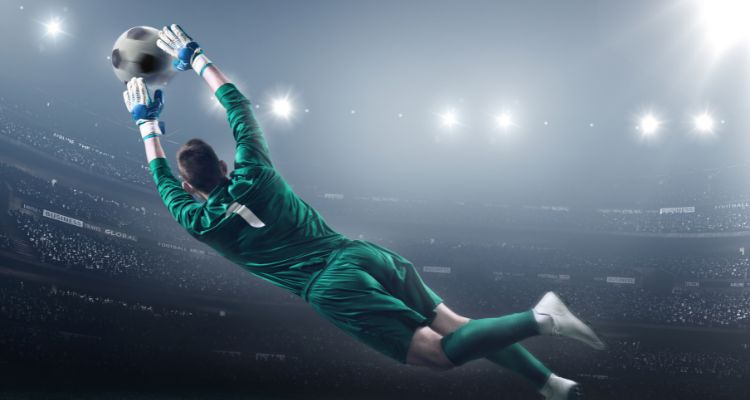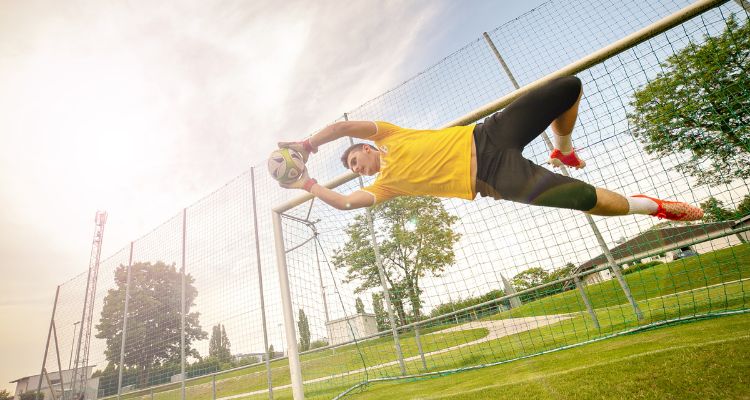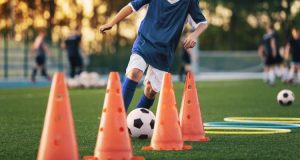
When planning the warm-up for goalkeepers, it is necessary to keep in mind the many factors that will determine the workout program to be carried out during training and before matches, as it will vary according to the age and category in which he or she is playing.
The goalie is unquestionably one of the most important figures in the defensive area. Because of its unique traits in comparison to the other players, it will need specific training.
Multiple areas will be strengthened as a result of these warm-up activities, including:
- Agility.
- Activation.
- Stability.
- Coordination.
- Quickness.
- Endurance.
It is essential to have an app that allows us to plan, design, and preserve records of the training sessions throughout the day in order to set tasks for each of the players.
Warm-up drills for goalkeepers
The exercises utilized for goalkeeper training have changed throughout time, with a higher emphasis on duties involving contact with the ball and interacting with other team members.
A unique warm-up strategy should be developed based on the physical needs that the coach wants to improve, with the objective of enhancing the goalkeeper’s weaknesses while perfecting the aspects in which he or she is particularly strong.
The following is an example of a standard goalie warm-up structure:
The body is being prepared.
The ball made contact with you.
Aerial sports.
Goal kicks are made.
Goal kicks are made.
Furthermore, it is always crucial to consider external factors that will have an impact on the training, such as the following:
Time of the season
It is important to establish the plan based on the circumstances since, although similar, conducting warm-up exercises before a match shouldn’t be the same as during preseason practice.
Location and temperature
The players are accustomed to training in the same location with the same temperature and environment, but bear in mind that when there are away matches, the conditions may be different.
It’s important to be able to adapt, no matter what.
The various surfaces
The type of terrain, like the temperature, might impact the game. Weather conditions might also have a direct effect on it. Playing on dirt is not the same as playing on grass, especially when there is humidity or wetness on the pitch.
The ball
Although they are fairly standardized, there will be times when you will not be playing with the same sort of ball that you have been practicing with. As a result, it is recommended to use the warm-up to practice with the different models.
Once all of these elements are established, it is time to get to work and begin with the fundamental workouts and pre-match warm-up exercises for goalkeepers.
Don’t miss our post on professional football warm-up drills if you’re seeking a general warm-up approach for the entire squad.

Body conditioning
It is critical to adequately prepare the muscles and joints before beginning any form of physical exercise.
What sorts of exercises are often performed at this stage?
During this phase, we will concentrate on muscle and joint conditioning, as well as warming up and boosting the heart rate.
We propose this set of exercises focusing on the upper body, lower body, and joints to work all areas of the body and boost the heart rate.
- Squats and ball squats to increase stability.
- Lounges
- Tossing the ball into the air, jumping, and catching it.
- Side-lying twist for the spine and shoulder girdle
- Shuffles from post to post
To get the heart rate up, try these easy drills with the ball:
- The ball is passed from one hand to the other.
- Passing from hands to feet and back.
- Using the fingertips to pass between hands.
- For foot control, pass with the ball on the ground.
- Running with the ball in each hand, passing it beneath the knees as they rise, switching the ball from one hand to the other.
In any of them, you may change the posture of your body to make the workout more challenging.

Ball control drills
The intensity and amount of repetitions will vary depending on the goalkeeper’s level.
It is best to begin with easier dynamic workouts and then progress to more tactical techniques. Such as:
- Throw the ball upwards (and in the following rounds upwards – sideways) the player should be kneeling on the ground. The goal is to catch it and hug it towards the chest to improve the reception.
- The player should be kneeling on the ground while throwing the ball upwards (and in subsequent rounds, upwards and sideways). The idea is to catch it and hold it to the chest in order to improve reception.
- To catch the ball, stretch the body sideways from a center position. The exercise may be done without the ball, with pauses in the middle as follows: Jump to the left side of the goal to grab the ball, then rise up and sprint to the center, repeat for each side.
- Sitting on the floor, with your legs half bent, take the ball with your arms stretched out and bring them backwards (until your back touches the floor and return to the starting position at 90º from the floor.
- The same as before, except after the body starts to back up, bend all the way back until the knees hit the floor from behind. This backward roll increases the flexibility of the lower body.
Below you will find a series of drills to practice involving the ball:
- Players should begin passing the ball in pairs while sprinting laterally. It’s also recommended to incorporate throwing the ball in different positions (to the chest, head, or foot) as well as variations in goalie posture (standing, crouching, or half-height).
- Short and long ball passes, aerial and low passes, increasing the distances between player and goalkeeper.
- Throws from inside and outside the goalie area, using different speeds and heights.
- Angled shot Stopping
- Reflex training drills to improve speed and reaction, such as shots from point blank range, second rebounds etc.
- Goal kicks



